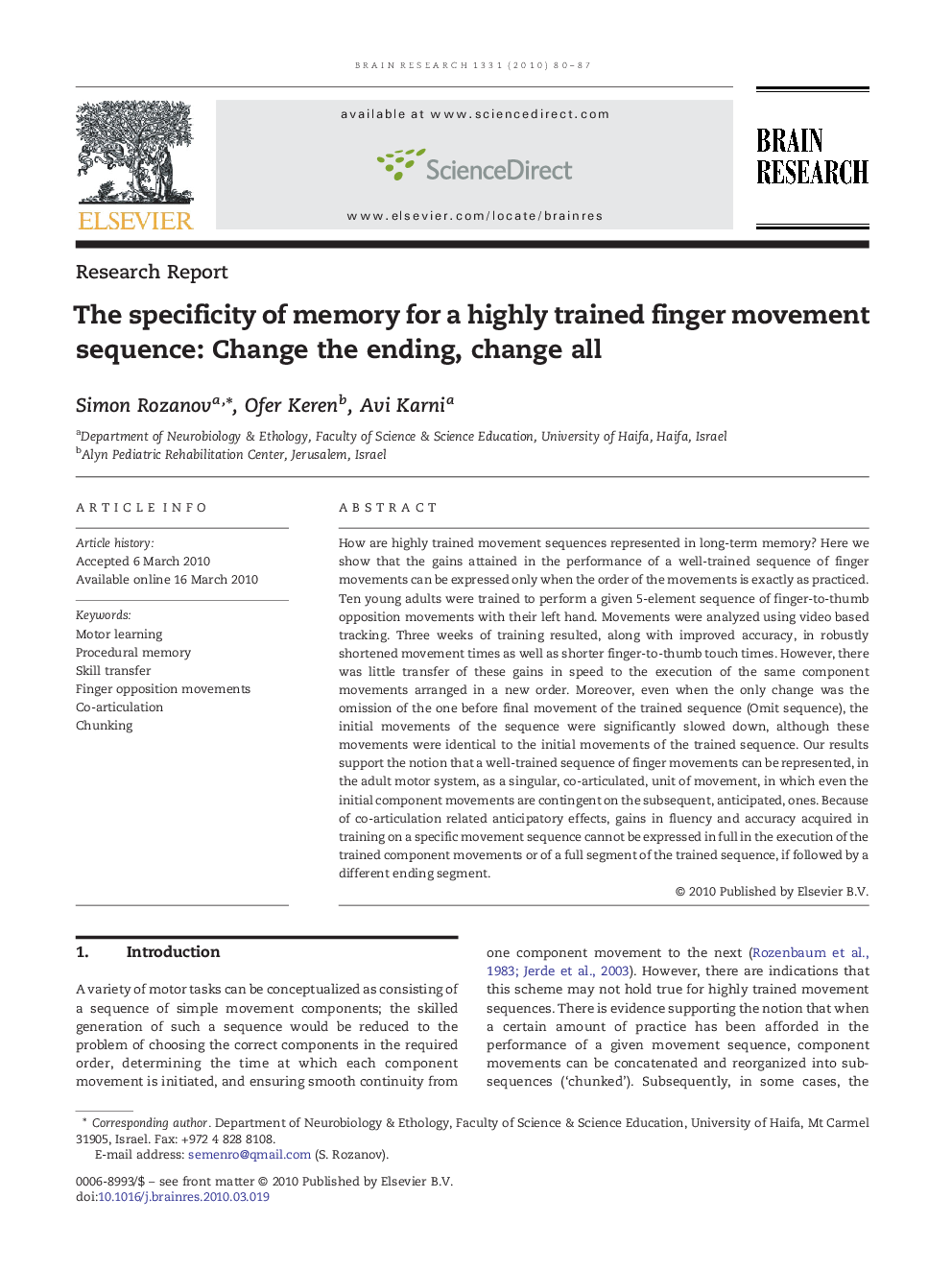| کد مقاله | کد نشریه | سال انتشار | مقاله انگلیسی | نسخه تمام متن |
|---|---|---|---|---|
| 4327035 | 1614108 | 2010 | 8 صفحه PDF | دانلود رایگان |

How are highly trained movement sequences represented in long-term memory? Here we show that the gains attained in the performance of a well-trained sequence of finger movements can be expressed only when the order of the movements is exactly as practiced. Ten young adults were trained to perform a given 5-element sequence of finger-to-thumb opposition movements with their left hand. Movements were analyzed using video based tracking. Three weeks of training resulted, along with improved accuracy, in robustly shortened movement times as well as shorter finger-to-thumb touch times. However, there was little transfer of these gains in speed to the execution of the same component movements arranged in a new order. Moreover, even when the only change was the omission of the one before final movement of the trained sequence (Omit sequence), the initial movements of the sequence were significantly slowed down, although these movements were identical to the initial movements of the trained sequence. Our results support the notion that a well-trained sequence of finger movements can be represented, in the adult motor system, as a singular, co-articulated, unit of movement, in which even the initial component movements are contingent on the subsequent, anticipated, ones. Because of co-articulation related anticipatory effects, gains in fluency and accuracy acquired in training on a specific movement sequence cannot be expressed in full in the execution of the trained component movements or of a full segment of the trained sequence, if followed by a different ending segment.
Journal: Brain Research - Volume 1331, 17 May 2010, Pages 80–87